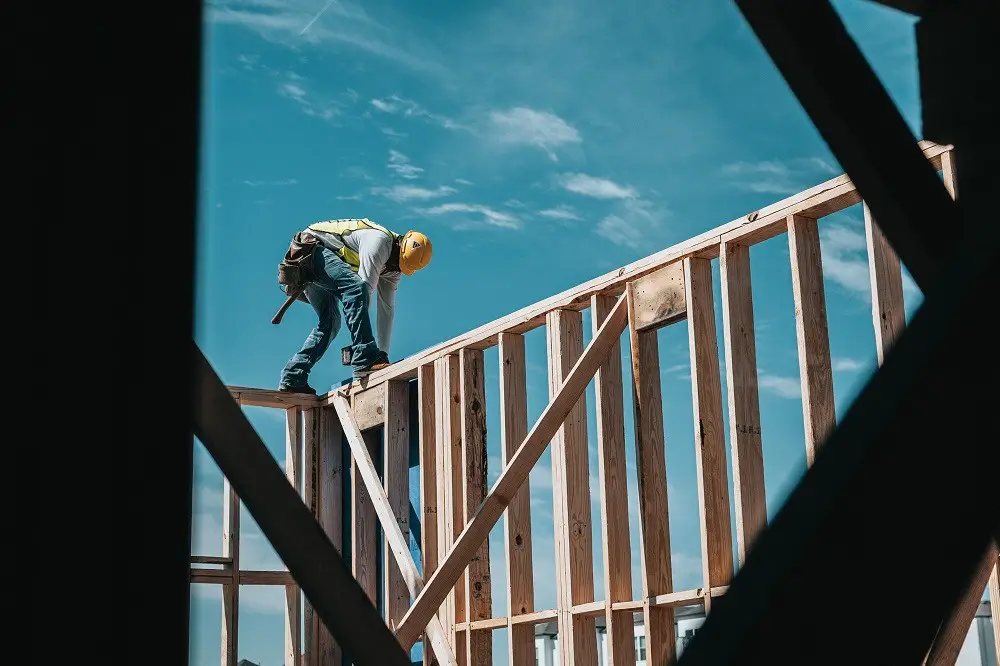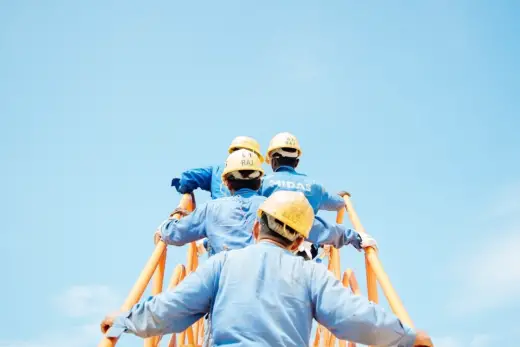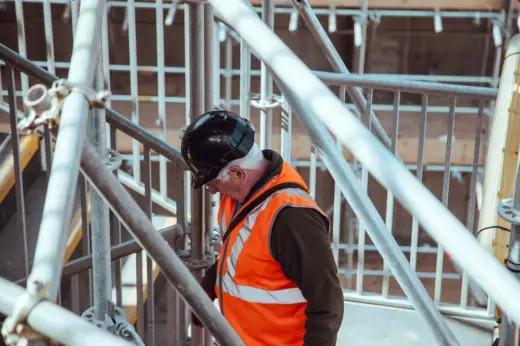Safety helmets vs hard hats tips, Property building work advice, Construction H&S guide
Safety Helmets Vs Hard Hats
2 February 2022
We are all accustomed to seeing construction workers wearing different colored hard hats. However, safety helmets are slowly replacing them for increased head protection.
When it comes to knowing the difference between safety helmets and hard hats, not many people are aware of the basics. But why are companies slowly switching to the former to enhance worker safety?
Let us discuss the differences between safety helmets and hard hats and evaluate the safety helmet shift that most construction companies are embracing. Moreover, will safety helmets eventually take over the traditional hard hats?
Let’s take a look.
Safety Helmet Vs. Hard Hat
Before we delve into the details of the differences between the two, let us briefly discuss what each of these protective gears can do.
What Is A Safety Helmet?
When one thinks of a standard safety helmet, the iconic image of a rock climber, skier, or cycler comes to mind. You also find rescue workers wearing safety helmets to protect their heads from injury.
Safety helmets are generally associated with outdoor sports like mountain climbing, rock climbing, and other dangerous sports that require head protection. This protective headgear is attached close to the head and features chin straps that secure it tightly.
Furthermore, they generally don’t have a brim around their edges and do not offer ear protection. That said, safety helmets are designed with added safety elements like attachable visors, built-in chin straps, and protective padding. These are constructed using hi-viz materials to protect the user’s head.
It is important to note that OSHA regulations require workers to wear compliant head protection to work on construction sites. These safety helmets should be American National Standards Institute (ANSI) compliant.
What Is A Hard Hat?
Construction workers and laborers in the construction industry have worn the traditional hard hat for decades. In fact, the first instance of advanced head protection equipment was observed a century ago when shipbuilders would commonly cover their protective hats with tar in an attempt to protect themselves from falling objects from the ship.
Later, manufacturers began developing alternative head protection gear made of plastic, aluminum, steel, leather, and fiberglass. There are even instances of safety helmets made using steamed canvas pieces that are attached using powerful glue.
Modern hard hats are typically made of polyurethane and have advanced features like visors, lights, face shields, ventilators, ear protection muffs, etc. They are now being designed not only to protect the top of the head but also the back and sides.
Furthermore, adjustable chin straps help keep the helmet securely in place while working on construction sites to protect workers.
Differences Between Hard Hats And Safety Helmets
Hard hats were initially designed to protect the top of the head of workers from falling objects. However, they had limited options and did not do much to protect the rest of the head. On the other hand, safety helmets provide protection from front, back, and side impacts.
They are made of construction tough material and are far more durable and reliable than a hard hat. Besides, a lot of these helmets come with an adjustable chin strap that allows the worker to secure the helmet properly. There are various types and classes of helmets designed for different work purposes, unlike the hard hat, which has limited designs.
Types And Classes Of Safety Helmets ANSI Type I Helmets
The “type” assigned to a safety helmet refers to the protection level it provides from an impact. Likewise, its “class” refers to the level of protection it provides from electrical hazards.
Types Of Helmets
1. ANSI Type I Helmets
These helmets reduce the force of an impact on the top of a worker’s head.
2. ANSI Type II Helmets
These helmets reduce the force of an impact at the sides of a worker’s head.
Classes Of Helmets
- Class E (Electrical) Helmets – designed to withstand up to 20,000 volts
- Class G (General) Helmets – designed to withstand up to 2,200 volts
- Class C (Conductive) Helmets – does not protect the worker from electricity
Can We Expect Safety Helmet Domination To Take Place?
Now that you are aware of the numerous benefits of safety helmets, you may be wondering if they will eventually take over hard hats. Plus, with the number of safety helmet options, safety managers have more options to choose from.
When it comes to increased safety and impact protection, safety helmets are definitely the way to go. They not only protect your head from objects falling from above but also minimize lateral impacts.
That said, many construction workers state that they feel uncomfortable wearing safety helmets and would prefer sticking to the typical hard hat. This still makes sense for a construction worker working at the ground level, but for others working in more dangerous areas, safety helmets are the better option.
Moreover, if construction firms strictly follow hard hat color codes, it may provide extra protection to their workers.
Another factor to note is the cost. Typically, safety helmets cost much more than hard hats, and replacing one or buying multiple helmets for employees can take a toll on the finances of small businesses.
Also, most construction companies are compelled to provide head protection equipment to their workers to keep them safe from injury. So, opting for a safety helmet might cost more initially, but will prove to be more cost-effective than replacing multiple hard hats throughout the year.
It is vital to weigh the long term cost benefits of safety helmets, as they may be more expensive, but they will also last longer than hard hats. So, construction workers might wear hard hats depending on their job type. Those with a higher-risk job may think about embracing safety helmets for increased protection.
Who Can Benefit From Advanced Head Protection Gear?
You may think that safety helmets are designed only to provide protection to workers, but this isn’t true. Opting for safety helmets is beneficial for all the parties involved.
A. Benefit To The Workers
Undoubtedly, the first in line would be the workers themselves, who would benefit from advanced head protection gear. It keeps them safe from injury and allows them to work without worry.
B. Benefit To Employers
Yes, safety helmets can benefit the employers and company as well. In the case of an injury, the company may lose a good worker, which is never a favorable thing. Moreover, the company will not have to worry about the compensation payout for a worker if he has less chances of being injured on site.
C. Benefit To Insurance Carriers
Finally, fewer chances of worker injury on the job site also mean less risk and fewer claims, which is beneficial to the insurance company.
All in all, it’s a win-win situation for everyone involved!
Safety helmets vs hard hats Conclusion
Hard hat or safety helmet – which one should a construction company opt for?
In our opinion, it depends on the type of job a worker has. Although most people envision a construction worker wearing a hard hat whenever they think of head protection gear, safety helmets coexist – and for good reason.
The increased eye protection, side and front of the head protection, and overall increased safety provided by these helmets makes them the better option for workers. However, construction companies must ensure that their safety helmets follow the regulations set by the American Nations Standards Institute.
Slowly but surely, the shift to safety helmets may make a worksite safer for everyone involved. That said, we cannot completely do away with hard hats, and as long as it is a safe option, ensure that you only opt for the best hard hats for workers.
Comments on this tips on Safety helmets vs hard hats article are welcome.
Glasgow Building Designs
Glasgow Architecture Designs – architectural selection below:
50 Bothwell Street Office Redevelopment
Comments / photos for the Safety helmets vs hard hats advice page welcome





